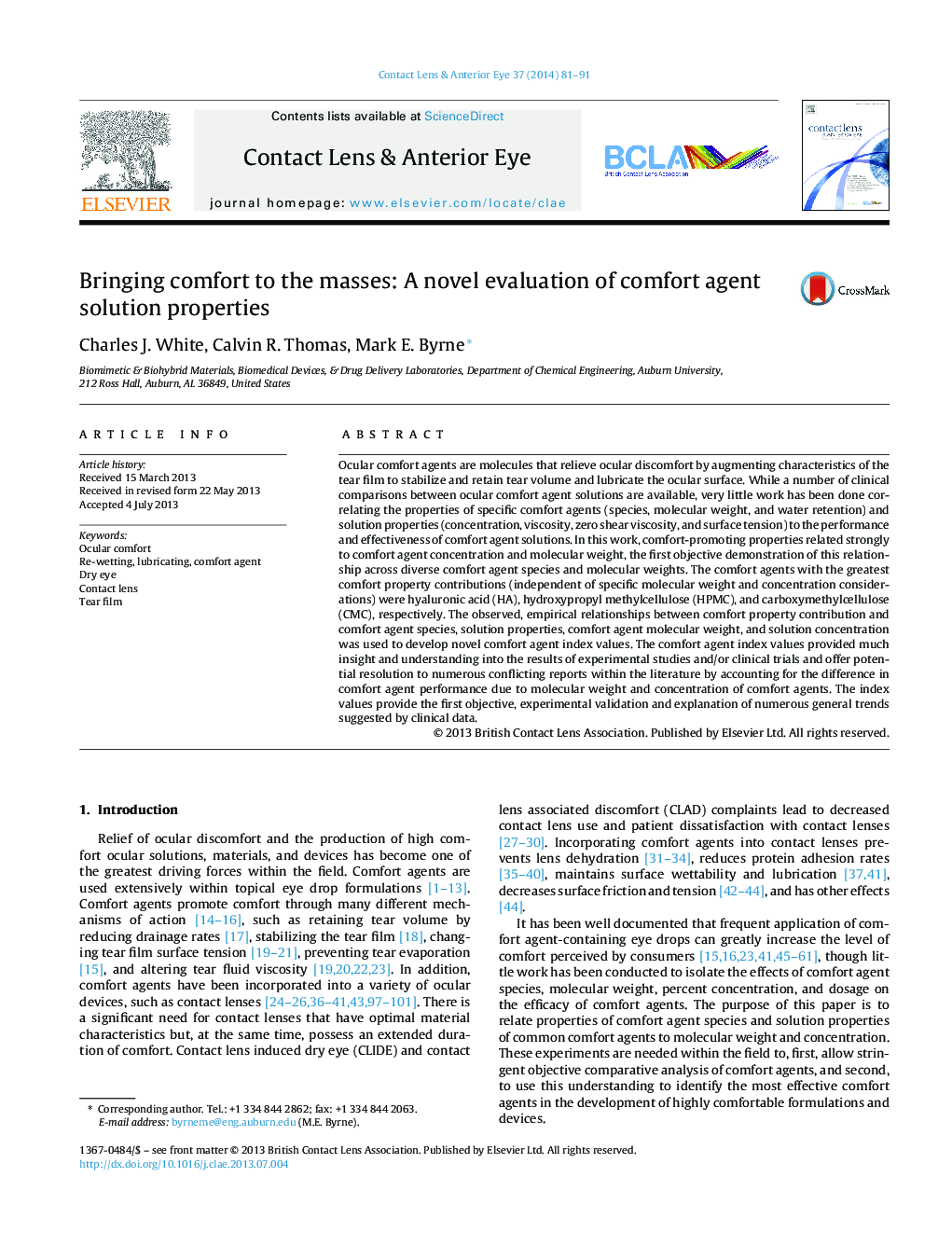| Article ID | Journal | Published Year | Pages | File Type |
|---|---|---|---|---|
| 2693157 | Contact Lens and Anterior Eye | 2014 | 11 Pages |
Ocular comfort agents are molecules that relieve ocular discomfort by augmenting characteristics of the tear film to stabilize and retain tear volume and lubricate the ocular surface. While a number of clinical comparisons between ocular comfort agent solutions are available, very little work has been done correlating the properties of specific comfort agents (species, molecular weight, and water retention) and solution properties (concentration, viscosity, zero shear viscosity, and surface tension) to the performance and effectiveness of comfort agent solutions. In this work, comfort-promoting properties related strongly to comfort agent concentration and molecular weight, the first objective demonstration of this relationship across diverse comfort agent species and molecular weights. The comfort agents with the greatest comfort property contributions (independent of specific molecular weight and concentration considerations) were hyaluronic acid (HA), hydroxypropyl methylcellulose (HPMC), and carboxymethylcellulose (CMC), respectively. The observed, empirical relationships between comfort property contribution and comfort agent species, solution properties, comfort agent molecular weight, and solution concentration was used to develop novel comfort agent index values. The comfort agent index values provided much insight and understanding into the results of experimental studies and/or clinical trials and offer potential resolution to numerous conflicting reports within the literature by accounting for the difference in comfort agent performance due to molecular weight and concentration of comfort agents. The index values provide the first objective, experimental validation and explanation of numerous general trends suggested by clinical data.
